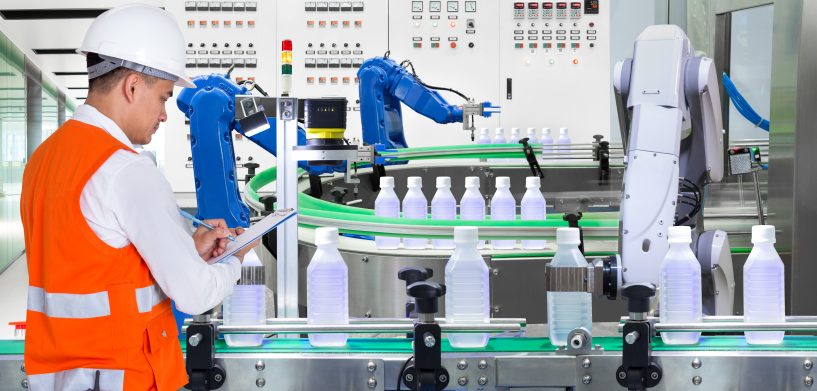Quality inspection is often undervalued but is an essential component of a successful production operation. This is because the cost of addressing defects after a customer receives the product far exceeds the cost of fixing issues before product delivery. Learn what creating a culture of quality can do for your business.
What is quality inspection?
Quality inspection is the total process of checking deliverables to verify they are free from defects and comply with pre-determined criteria. Depending on the product, inspecting for optimal quality may consist of one or many distinct tasks that occur at various stages in manufacturing. Methods of inspection may include involve activities such as visually examining, testing, measuring or performing any other process needed to ensure deliverables meet all relevant requirements and standards.
Advantages of quality inspection
What is quality inspection for if not to save on the cost of satisfying the customer? When contemplating investments in assuring quality, consider this: Post-delivery costs to rectify defects or other deficiencies might come not only in the form of warranty claims and on-site remedial work, but also in customer confidence and business reputation. Conversely, a well-managed, robust quality inspection process can reduce future costs by minimizing the need for remedial actions, preventing warranty claims and even avoiding expensive litigation.
Remember the 1:10:100 ratio
The 1:10:100 ratio is a concept developed by management experts G. Loabovitz and Y. Chang and is based on extensive research into what it takes to remediate mistakes. In the simplest terms, it posits that error prevention is preferable to and less expensive than error remediation. That may sound obvious, but it’s easy to forget in the heat of meeting deadlines!
In more concrete terms, the 1:10:00 ratio projects that identifying and correcting mistakes during production of a product will cost approximately 10x more than it would during product planning and development. Extending the concept further, an error will then cost 100x more to remedy post-delivery – when it has already reached the customer. With that being the case, it is easy to see why careful and thorough quality inspections should not be taken for granted!
Quality control vs. quality inspection
As we have discussed, an accurate quality inspection definition refers to the process of checking deliverable products to verify they are free from defects and comply with pre-determined quality standards.
Although often conflated with quality control (QC), the former refers more broadly to the total process of managing product quality to meet preset standards. QC may involve a range of processes used to determine product compliance and overall quality.
On the other hand, quality inspection is actually a component of QC and is specifically designed to identify product defects as early as possible in the production process – before they impact the majority of a shipment or other deliverable.
Types of quality inspections
There are three basic types of quality inspections, although in some contexts they may be broken down further. In general, such an inspection is performed using one or more of the following methods:
- Pre-production
- In-line (during production)
- Final
Each type of inspection has its own costs and benefits, and often more than one type of inspection is required before products are delivered to the customer. The more complex the product being made, the more inspections that may be needed. Let’s look briefly at each major type of inspection.
Pre-production
Pre-production inspections are conducted on raw materials once they are received by the manufacturer. Performing this earliest of inspections enables you to verify that all materials being used meet your requirements. This type of manufacturing quality inspection can also be used to check a product prototype or to confirm you have the right tools to work with the delivered materials.
In-line
Also known as in-process inspection, the first products that came from the production line are checked for conformity. Identifying problems at this stage enable the manufacturer to take remedial action early, preventing unacceptable delays. It also allows you to give the buyer a more realistic view of the delivery date than if defects are discovered after production is complete.
Final
Of the three types of inspections discussed, only final inspection allows the finished product, or inventory of products, to be counted in the inspection. It is also the only option where truly random samples can be drawn so they most accurately represent the entire inventory. It is also conducted at the stage where remediation of defects is most expensive – other than after the product is delivered to the customer.
How to leverage quality inspection software
As production operations become more complex, integrated software for quality inspection can add substantial value to your quality initiatives. Digital quality inspection solutions bring structure, predictability and control to your quality operations and provide a foundation for collaboration with production workers and other personnel.
Investing in quality software, including robust quality inspection, adds value immediately by sending a message to your employees that executive management is committed to quality. Not only does it allow you to compare materials and manufactured products against clear quality criteria, but it also increases enterprise-wide visibility into quality data and engages employees in all your quality initiatives.
How does quality inspection software really prove its worth in an organization? The simplest answer is that it provides the framework to operationalize all workflows associated with ensuring impeccable quality inspections. Rather than rely on error-prone manual inspection data, quality inspection software provides a consistent, repeatable process that every inspector must follow, every time.
For maximum leverage, the ideal software solution includes mobile capabilities that enable quality inspection staff, production workers, financial professionals and other employees to access quality information – including inspection data and associated business statistics – from a table or smartphone. This gives everyone in the organization an opportunity to take pride and ownership in an organization’s culture of quality.
Given the important role the quality inspection process plays in a company’s profitability, customer satisfaction and ultimately its growth, it becomes clear why the right quality inspection strategy and quality inspection solutions are critical to achieving an organization’s strategic business goals.
Do you want to get more from your quality inspection process? Mobile applications from Hexagon Xalt can help. Visit hexagonxalt.com, request a demo or call toll free at +1 800-939-6812.


















